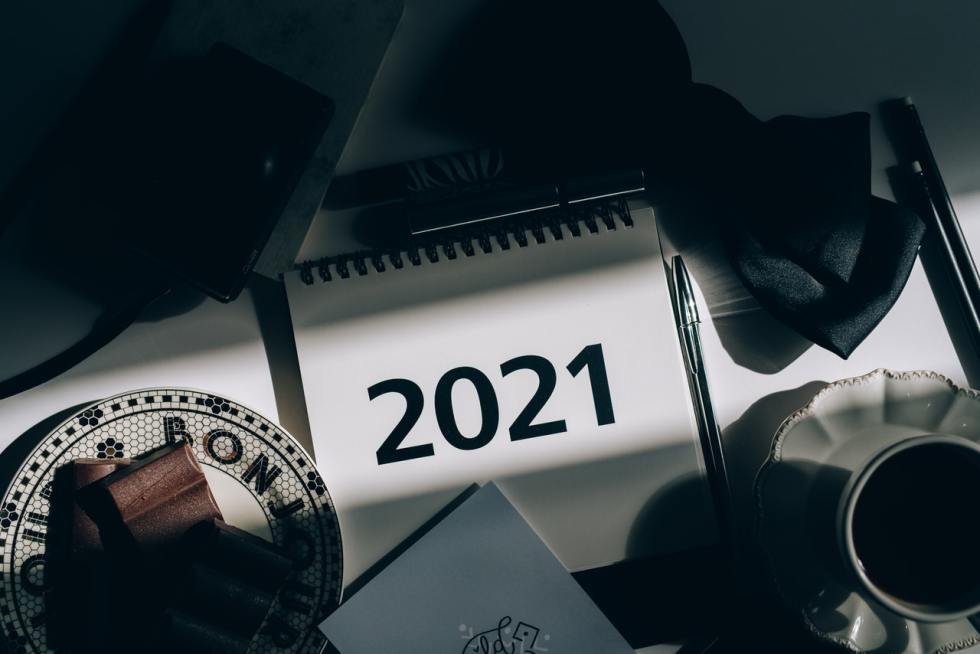You could say that time in NFTs feels like it’s measured like “dog years:” one year in NFTs feels like seven years everywhere else. If you blink, you’ll probably miss a noteworthy project that is released in the space these days. It was a wild ride through non-fungible tokens in 2021, and just like we do each week with NFTs In A Nutshell – it’s only appropriate that we recap all of the action this year.
To say that the market grew monumentally throughout 2021 would be an understatement. This space went from a corner of crypto’s niche communities, to a mainstream topic of conversation that dominated headlines by the time the back half of the year came around.
Let’s look at the full storyline of NFT engagement from start to finish in 2021.
An NFT Rewind… Looking Back At Q1 & Q2 2021
Q1 began the NFT boom, starting primarily with centralized projects including NBA Top Shot that began skyrocketing around February and March. OpenSea volume crossed a monthly mark of $100M for the first time in March as well, and NFTs were starting to get more on the radar of casual crypto consumers. Keep in mind, this is following roughly $8M worth of NFT sales in December 2020, which was record-breaking at the time.
By March 2021, not only were volumes ramping up, but creators began establishing substantial identities online for their work as well; digital design artist Beeple was making major headlines, selling his Everydays NFT for a record-shattering $69M – the eighth-most expensive artwork sold in 2021. Christie’s began selling NFTs in the first half of the year as well, generating lasting traction for the auction house that has resulted in more and more NFT-dedicated auctions, including crypto-only payment auctions as well.
In May, here at Bitcoinist we started our weekly edition of NFTs In A Nutshell, our weekly recap of NFTs published every Saturday. To close out the first half of the year, volume continued to surge, and January through June netted north of $2.5B in NFT sales – a massive jump from just $13.7M through the first half of 2020.
Related Reading | Why Q1 2022 Will Be A Bullish Period For Bitcoin And Ethereum, Raoul Pal Says
While Ethereum has dominated the market, many institutional projects look for blockchains that are less gas-intensive, and more environmentally friendly. | Source: ETH-USD on TradingView.com
Q3 & Q4 2021: NFTs In Full Swing
By the back half of the year, NFTs and the metaverse dominated the crypto conversation. OpenSea began to open the flood gates, jumping from $0.33B in July to $3.4B in August according to Arcane Research. August was host to more NFT trading volume than the entirety of Q1 and Q2 combined. It was all systems go. Corporate engagement in NFTs started to get buzzing as well, spearheaded by Visa’s purchase of a CryptoPunk in August.
Social media platforms like Twitter had an increasing number of headlines around potential NFT integration, and gaming companies like Ubisoft, Epic Games, and EA began to at least start addressing the topic of NFTs in gaming throughout the back half of the year.
Altcoins, which had a dominant 2021 compared to more tempered (but still successful) tokens like Ethereum and Bitcoin, started to infiltrate their way into NFTs as well – starting with a surge in Solana-based NFTs, in a wave that has expanded to other Layer 1s including Polygon, Cardano, Avalanche and more. This movement was exacerbated by consistently excessive gas fees for Ethereum-based transactions. Just a quick glance at Arcane Research’s graph detailing yearly transaction fees for Ethereum against Bitcoin, and NFTs can tell quite a story:
By December, increasing talks of NFT utility and surrounding ecosystem tools have come to life – such as Kraken’s recent interest in building infrastructure to allow users to borrow against their NFTs.
Of course, NFTs were ‘mainstream’ by the time autumn rolled around, and throughout the second half of the year, not only did crypto-native digital artists start to find their own lane, but established creators across all sorts of mediums started getting involved in the space. From legendary film director Quentin Tarantino, to classic music personas like The Beatles and sports stars like Shaq – everyone wanted a slice of the action.
Brand engagement in the back half of the year started to come to form as well. Highlighted by the likes of Nike and Adidas, 2021 found host to NFT projects for brands like Budweiser, Dolce & Gabbana, and Disney.
2022: What’s In Store?
What’s in the making for non-fungible tokens in 2022? Don’t be surprised to see more and more brands get involved in the space. Other emerging trends in untapped areas of NFTs include music – an industry that is largely archaic and ripe for revitalization (with a number of NFT platforms looking to build out music-based NFT marketplaces specifically) and fantasy sports betting – an area that DraftKings has shown initiative in specifically when it comes to NFTs. Additionally, NFT communities online have had ongoing debates about strictly art-inspired NFTs (leaning into community and thematics) versus utility NFTs that are ‘more than just art.’ Like many things in crypto, the answer is likely somewhere in the middle – the greatest art-driven NFTs will likely continue to thrive, while many core NFT consumers also look to more projects that exhibit interesting, unique utility.
Only time will tell how it all shapes out – but don’t expect NFTs to fall off the radar anytime too soon.
Related Reading | MicroStrategy Is The Sole Driver Of Bitcoin Corporate Treasury Balance Growth
Featured image from Pixabay, Charts from TradingView.com The writer of this content is not associated or affiliated with any of the parties mentioned in this article. This is not financial advice.
